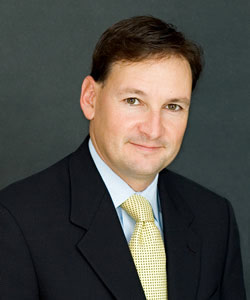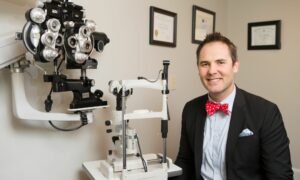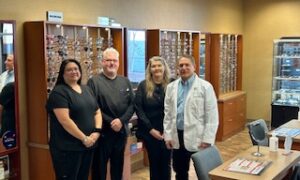By Paul Karpecki, OD, FAAO
In 2013, Alcon became the first to announce a “unilateral price policy” requiring that its customers sell its new contact lens products at no less than a minimum retail price—or they will not be sold that product. Soon after, Bausch & Lomb announced that its new ULTRA premium contact lens also would follow a unilateral price policy.
Several major ophthalmic companies recently initiated unilateral pricing policies for their new, premium contact lenses.
This new approach to pricing ensures that, at least for new, premium products such as Alcon’s DAILIES TOTAL 1 and Bausch + Lomb’s ULTRA, independent ODs will not be undermined by discount retailers on the basis of price.
For a number of compelling reasons, this will benefit optometry greatly.
Perception change. Importantly, unilateral pricing facilitates a fundamental “perception change” that has limited many optometrists from fully embracing contact lenses dispensing. Independent practices no longer will appear in the minds of some consumers to be “price gouging” for products that can be bought for less, within seconds, on a smartphone.
How can we leverage the key advantages that this presents to optometry?
Communicate value. First, we can communicate the value we provide. By eliminating price as a leading motivator, patients will be able to fulfill their contact lens needs based on value. That value comes from a doctor’s clinical knowledge of the various options for each patient, and from the experience that patient has in our offices. We need to effectively increase the value of the exam and overall patient care if patients are to think of their experience in our offices in a new light.
Promote medical model. Second, unilateral price policies provide a prime opportunity for independent ODs to promote the medical model, which allows patients with any vision or eyecare need to select that same optometrist to treat it. In the past, patients would see one doctor for contact lenses and another physician if they had a red eye or ocular disease like glaucoma or dry eye disease.
Educate patients. Part of the issue is simply patient education: It makes more sense to see an optometrist for a red eye than the ER or a pediatrician. After all, ODs have the knowledge and equipment to provide the most accurate diagnosis.
By eliminating price as a decision maker in purchasing contact lenses, perceptions change. A patient can begin to think of seeing the same optometrist for their optical, contact lens and medical eyecare needs.
Rediscover CL profitability. One other exciting development: Independent practice optometry becomes reinvigorated with contact lens prescribing as a profitable specialty and practice differentiator. Years ago, our profession did exactly that as we provided various contact lens needs for our patients. Certain offices differentiated themselves by providing outstanding specialty contact lens services.
Once the independent optometrist is freed from a negative consumer perception (“I can get a better deal on contact lenses elsewhere”), the patient can make decisions solely based on what is best for their needs, their ocular health assessment, visual needs and types of premium contact lenses available.
Paul Karpecki, OD, FAAO, works in corneal services and heads the ocular surface disease clinic and is director of clinical research at the Koffler Vision Group in Lexington, Kentucky. A noted educator and author, Dr. Karpecki is the Chief Clinical Editor for the Review of Optometry Journal. He is past president of the Optometric Council on Refractive Technology and serves on the board forOptometry Giving Sight. To contact him: paul@karpecki.com.



























